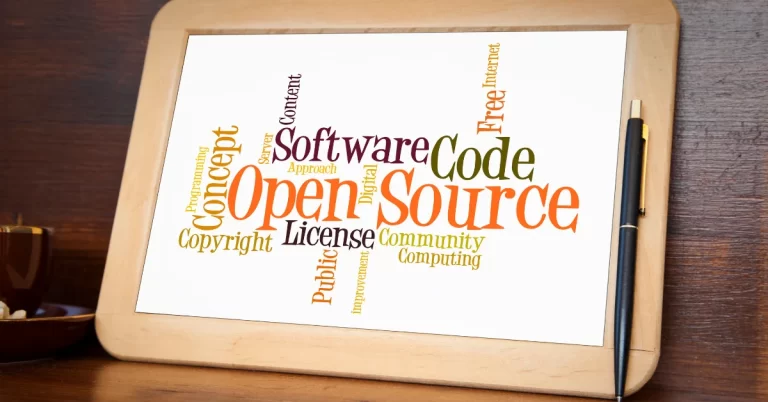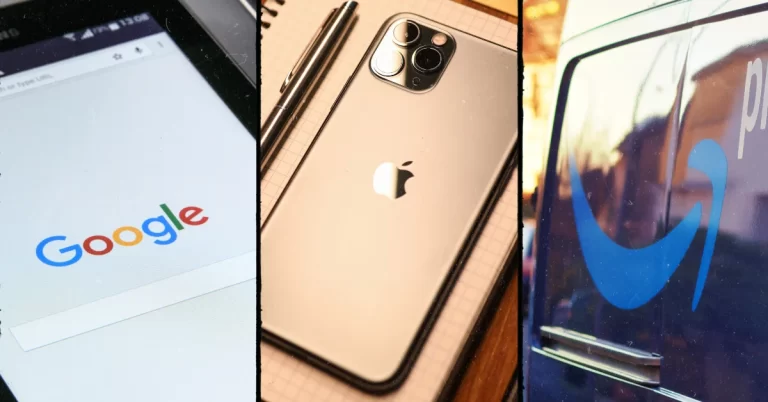Blockchain Innovations: The Patent Landscape Explained
When Bitcoin emerged in 2009, few people realized that the technology behind it—blockchain—would trigger a patent gold rush. Today, companies from tech giants to small startups are racing to patent blockchain innovations. But what exactly are they patenting, and what does this mean for the future of this technology?
As someone who’s helped numerous clients navigate blockchain patent strategies, I’ve had a front-row seat to this fascinating and rapidly evolving landscape. Let’s explore what’s happening and why it matters.
The Blockchain Patent Boom
The numbers tell a compelling story. In 2015, only a few hundred blockchain-related patent applications were filed worldwide. By 2024, that number had skyrocketed to tens of thousands. This explosive growth reflects blockchain’s evolution from a niche technology used primarily for cryptocurrencies to a transformative innovation with applications across virtually every industry.
What’s driving this patent boom? Three key factors:
- The expanding application landscape: Blockchain has moved far beyond cryptocurrency and is now being applied to supply chain management, healthcare records, voting systems, digital identity, and dozens of other fields.
- Increasing corporate investment: Major companies have recognized blockchain’s potential and are investing heavily in research and development.
- The strategic value of blockchain patents: Early movers are seeking to secure competitive advantages in what many believe will be foundational technology for the coming decades.
Who’s Leading the Blockchain Patent Race?
The blockchain patent landscape features some surprising leaders:
Tech Giants
It’s no shock that technology companies are filing blockchain patents, but the volume is impressive. IBM, Microsoft, and Amazon have each filed hundreds of blockchain-related patents. These cover everything from basic blockchain infrastructure to specific applications and integration with other technologies like cloud computing and Internet of Things (IoT).
Financial Institutions
Traditional financial companies recognized the potential threat (and opportunity) that blockchain presents to their business models. Bank of America, Mastercard, and Visa are among the top blockchain patent holders. Their patents often focus on payment systems, transaction verification, and security features.
Blockchain-Focused Companies
Companies built specifically around blockchain technology, like Coinbase and Chain, are actively patenting their innovations. Chinese company Alibaba has been particularly aggressive, focusing on blockchain applications for its e-commerce and financial services.
Unexpected Players
Some surprising companies have entered the blockchain patent race. Walmart, for instance, has filed patents for blockchain-based supply chain tracking systems, while automakers like Ford and Toyota are patenting blockchain solutions for vehicle data sharing and autonomous driving systems.
What’s Being Patented?
Blockchain patents generally fall into several key categories:
Core Infrastructure
These patents cover fundamental aspects of how blockchains work. Examples include:
- Consensus mechanisms (alternatives to proof-of-work)
- Scalability solutions (like sharding and layer-2 protocols)
- Energy efficiency improvements
- Network security innovations
Industry-Specific Applications
Many patents focus on applying blockchain to specific industries:
- Healthcare: Secure patient record management and drug tracking
- Supply Chain: Product tracking from manufacturer to consumer
- Financial Services: New payment systems and transaction processing
- Energy: Peer-to-peer energy trading platforms
- Real Estate: Property record management and transaction systems
Integration Technologies
Another major category covers integrating blockchain with other technologies:
- IoT device integration with blockchain networks
- Artificial intelligence combined with blockchain systems
- Cloud services built on blockchain infrastructure
- Mobile interfaces for blockchain applications
The Patent Quality Question
Not all blockchain patents are created equal. In the rush to stake claims in this emerging field, companies have filed for patents of varying quality and scope.
Some patents are remarkably broad, attempting to claim fundamental aspects of blockchain technology. Others are narrowly focused on specific implementations or applications. This variation in patent quality and scope creates challenges for the industry.
During the early gold rush, some questionable patents were granted. For example, I once reviewed a patent that claimed to cover the basic concept of using blockchain for supply chain tracking—something that had been publicly discussed for years before the patent was filed.
As patent examiners have become more familiar with blockchain technology, the quality bar has risen. Today, securing a blockchain patent typically requires demonstrating genuine technical innovation rather than simply applying blockchain to a new field.
The Open Source Paradox
One of the most interesting tensions in the blockchain patent landscape is between the technology’s open-source roots and the proprietary nature of patents.
Bitcoin and many early blockchain projects were developed as open-source software, available for anyone to use, modify, and build upon. This open approach helped fuel blockchain’s rapid development and adoption.
Yet now, many companies are seeking exclusive rights to blockchain innovations through patents. This creates a potential conflict: How can a technology founded on openness and decentralization evolve when key components are increasingly being patented?
Several initiatives have emerged to address this tension:
Defensive Patent Licensing
Some blockchain companies use patents defensively—not to block others, but to prevent someone else from patenting the same idea and then demanding licensing fees. They pledge to use their patents only defensively, not offensively against the community.
Patent Pools
Organizations like the Blockchain Intellectual Property Council aim to create shared patent resources that protect the community while still allowing companies to patent their specific innovations.
The Blockchain Open Patent Alliance (BOPA)
Founded by Square (now Block) in 2020, BOPA aims to create a collective shield against patent aggressors by pooling patents from multiple companies. Members pledge not to use their crypto patents against other members except for defensive purposes.
Global Patent Landscape: Not All Countries Are Equal
The blockchain patent race has distinct regional patterns:
United States
The U.S. remains a major center for blockchain patent filings, with a focus on applications and integration technologies. U.S. patent law has evolved to be more accepting of blockchain patents, though pure cryptocurrency patents still face challenges under financial service restrictions.
China
China leads the world in raw numbers of blockchain patent filings. The Chinese government has identified blockchain as a strategic technology, encouraging domestic companies to develop and patent blockchain innovations. Chinese patents often focus on infrastructure and integration with existing systems.
Europe
European patent filings for blockchain have grown more slowly. The European Patent Office applies relatively strict standards for software and business method patents, which affects some blockchain innovations. European patents often focus on technical improvements to blockchain infrastructure rather than applications.
South Korea and Japan
Both countries have seen significant blockchain patent activity, with South Korea particularly active in cryptocurrency-related patents and Japan focusing on financial applications and security.
This global variation means that a blockchain innovation might be patentable in one country but not another—creating a complex international landscape for companies to navigate.
Real-World Impact: Patents in Action
How are blockchain patents actually being used in the real world? Here are some examples:
Licensing Revenue
Some companies are licensing their blockchain patents to generate revenue. IBM, for instance, has developed a substantial blockchain patent portfolio that it uses in cross-licensing agreements and direct licensing to other companies.
Competitive Advantage
Patents are being used to secure market positions. For example, Mastercard’s blockchain patents help protect its position in the evolving digital payment space against both traditional competitors and new fintech challengers.
Investment Attraction
For startups, blockchain patents can help attract investment by demonstrating unique technology and barriers to entry for competitors. A blockchain security startup I advised used their patent portfolio to help secure Series B funding, as it showed potential investors they had protectable technology.
Litigation
We’re beginning to see blockchain patent litigation. In 2022, the first major blockchain patent trials took place, with more cases filed each year. As the technology matures and more patents are granted, litigation is likely to increase.
Challenges in Blockchain Patenting
Patenting blockchain innovations comes with unique challenges:
1. Prior Art Complexity
Determining what’s truly new in blockchain can be difficult. The technology evolved through open-source contributions, academic papers, forum posts, and code repositories—making it challenging to track what was known and when.
2. Rapidly Evolving Technology
Blockchain technology is evolving so quickly that patents filed today may be obsolete by the time they’re granted (which typically takes 2-4 years in the US).
3. Decentralization Questions
Some blockchain innovations involve decentralized systems where no single entity controls operation. This creates interesting questions about infringement—if a patent covers a decentralized protocol, who exactly is infringing when thousands of independent node operators run the software?
4. Jurisdictional Issues
Blockchain networks often operate globally, raising questions about how territorial patent rights apply to borderless systems.
Strategic Approaches for Innovators
If you’re working on blockchain innovation, how should you approach patents? Based on my experience with clients across the spectrum, here are some strategic considerations:
For Startups and Small Companies
- Focus on your unique technical innovations: Rather than trying to patent broad concepts, identify your specific technical contributions.
- Consider defensive publication: If you can’t afford extensive patent filings, consider defensively publishing your innovations to prevent others from patenting them.
- Be strategic about jurisdictions: File patents in countries most relevant to your business strategy rather than attempting global coverage.
For Established Companies
- Develop a balanced portfolio: Combine offensive patents (for competitive advantage) with defensive patents (to protect freedom to operate).
- Consider join patent initiatives: Organizations like the Blockchain Open Patent Alliance can provide protection while demonstrating industry leadership.
- Monitor the landscape: The blockchain patent environment is evolving rapidly, requiring ongoing vigilance and strategy adjustments.
The Future of Blockchain Patents
Where is the blockchain patent landscape headed? Several trends seem likely:
Increasing Patent Quality
As patent offices gain expertise in blockchain technology and apply stricter standards, we’ll likely see higher-quality patents with more specific technical innovations rather than broad conceptual claims.
More Litigation
As blockchain technologies achieve widespread adoption, patent litigation will inevitably increase. The first wave of major blockchain patent lawsuits is just beginning.
Industry-Specific Concentrations
Patent activity will increasingly focus on specific industry applications rather than generic blockchain technology, with healthcare, finance, and supply chain leading the way.
Evolution of Patent Pools
Collaborative approaches to blockchain patents will likely grow more sophisticated as the industry matures, potentially creating standardized licensing frameworks for core technologies.
Final Thoughts
The blockchain patent landscape reflects both the technology’s enormous potential and the complex questions it raises about innovation, ownership, and control. For a technology founded on principles of decentralization and open collaboration, the surge in proprietary patent claims creates fascinating tensions.
What’s clear is that blockchain patents are here to stay, and they’ll play a crucial role in shaping how this technology evolves and who benefits most from its adoption. Whether you’re a developer, entrepreneur, or established company, understanding this patent landscape is increasingly essential for navigating the blockchain ecosystem.
As with many aspects of blockchain, we’re in uncharted territory. The rules and norms around blockchain intellectual property are still being written. Those who engage thoughtfully with these issues now will be best positioned to thrive as the technology continues its journey from experimental concept to mainstream infrastructure.
As a patent agent with experience in both blockchain technology and intellectual property law, I’ve helped many clients navigate this complex landscape. While this article provides general guidance, each situation involves unique considerations. For specific advice about your blockchain innovations, consult with a registered patent attorney or agent experienced in this specialized field.






